This article is about my visit yesterday to two state parks in the Santa Cruz Mountains created around ancient redwood groves.
Big Basin Redwoods State Park in the Santa Cruz Mountains west of Boulder Creek, California is the first California State Park established in 1902 for the preservation of old-growth Sequoia sempervirens coast redwood forest.
Henry Cowell Redwoods State Park was the location of Santa Cruz Big Trees, a privately owned tourist attraction in 1899 on the railroad stop from San Jose to Santa Cruz. A rude awakening one day for Andrew P. Hill, a prominent California artist and photographer, happened at the Santa Cruz Big Trees attraction as he was trying to photograph an ancient giant redwood tree. Joseph Welch, owner of the redwood grove tourist attraction accused Mr. Hill of trespassing. Welch wanted payment from Hill to photograph his redwood trees. This encounter between a freelance photographer and a landowner operating a tourist business resulted in the creation of Big Basin Redwoods State Park in 1902. Andrew P. Hill is credited with the environmental movement to save the few old growth redwood groves remaining in the Santa Cruz Mountains at the beginning of the 20th century that led to the creation of the modern California State Parks system.
Big Basin Redwoods State Park is reached via California Highway 236 off Highway 9, main north-south two-lane winding road through the Santa Cruz Mountains. Highway 35, the Skyline Boulevard, intersects Highway 9 for San Francisco area travelers. Skyline Boulevard has outstanding views, if the weather has clear visibility, where you can see both the Pacific Ocean to the west and San Francisco Bay to the east.
The Santa Cruz Mountains are heavily forested hills of coast redwoods. A marine layer comes from the Pacific Ocean to the west and the southern San Francisco Bay to the east. The Santa Cruz Mountains are a relatively low peak coastal range with no mountains over 4,000 feet and much of the terrain is at 1,000 to 3,000 feet in elevation.
Nearly all the old growth redwood trees of the Santa Cruz Mountains were felled within 50 years of the California gold rush between 1850 and 1900. Land was sold cheaply and logging big trees was technologically challenging until steam powered machinery and railroad technology in the 1880s and 1890s made even the rugged remote valleys accessible to lumbermen. Private industry set up lumber camps and logged the extensive forest lands of the Santa Cruz Mountains clear cutting all the harvestable lumber. The ancient redwood trees built the houses of San Francisco and hundreds of other towns. Railroads made gilded-age wealth for some Californians. The coast redwood trees’ resistance to decay made it the perfect wood for bridge construction, buildings and railroad ties.
By 1900 there were only a few places where people could still visit old growth redwood trees in the Central Coast area south of San Francisco. Railroads brought tourists to the Santa Cruz Big Trees, a spot where early tourism saved a handful of old growth redwood trees estimated to be 1,000 to 1,800 years old.
When driving Highway 101, the Redwood Highway north of San Francisco to the Oregon border, one sees what appear to be endless vistas of dense redwood forests. There are thousands of square miles of coast redwood forests in northern California. Yet, look at this map and how much color do you see for old growth redwood forests?
Old growth redwood tree beside the Big Basin Redwoods State Park ranger station.
Turning left onto Highway 236 at the stop sign in the center of the mountain community of Boulder Creek, population over 4,000, took me past the golf course country club and past all the people driving the road to find myself on Highway 236 alone as I headed downhill into the park.
A deer crossed the road just as I came to the sign designating Big Basin Redwoods State Park. The deer hurried down the hillside as I slowed to a stop hoping to snap a photo before it disappeared into the woods. I missed that photo.
Big Basin Redwoods State Park
The story of Big Basin Redwoods State Park is linked to an incident that occurred in 1899 in what is now known as Henry Cowell Redwoods State Park, located at the town of Felton on Highway 9, five miles north of Santa Cruz. Big Basin Redwoods State Park is about 20 miles northwest of Felton. I visited both of these parks yesterday.
Andrew P. Hill was a portrait painter and photographer who moved to California from Indiana in the late 1860s when he was a teenager. In 1885 he opened a photography studio in San Jose and much of his work was documenting life and industry in the Santa Clara Valley, aka Silicon Valley these days.
By the late 19th century the giant trees of California, Coast Redwood and Giant Sequoia, were world famous attractions. Unfortunately, most people who saw these trees actually saw only only pieces of felled trees at fairs and exhibits as amusement spectacles shipped around the world for display attractions.
In 1899 Andrew P. Hill was on assignment for a British magazine to photograph coast redwoods of the Santa Cruz Mountains. Hill packed his photography gear and traveled by narrow gauge railroad from San Jose to the logging town of Felton. Hill set up his camera to photograph the Fremont Tree at Welch’s Santa Cruz Big Trees grove in Felton, California.
Fremont Tree, Henry Cowell Redwoods State Park
The legendary tale of this tree is John C. Fremont, U.S. military commander who played a significant role in the Mexican-American War of 1846-48, camped inside this tree in 1846. Fremont returned to the grove in 1888 and when asked if the tale was true, he replied, “It makes a great story, let it stand.”
I snapped this photo yesterday of the Fremont Tree. There is sufficient space inside the burned out hollow of the giant redwood for several people to camp.
Fremont Tree, Henry Cowell Redwoods State Park
Joseph Welch, the owner of the Santa Cruz Big Trees grove, demanded payment for the privilege of taking photographs on his land. Andrew P. Hill refused to pay Welch.
I was a little angry, and somewhat disgusted, with my reception at the Santa Cruz Big Trees. It made me think. There were still fifteen minutes until the train time. Just as the gate closed, the thought flashed through my mind that these trees, because of their size and antiquity, were among the natural wonders of the world, and should be saved for posterity. I said to myself, “I will start a campaign immediately to make a public park of the place.” I argued that as I had been furnishing illustrations for a number of writers, whom I knew quite well, that there was a latent force, which, when awakened to a noble cause, would immediately respond, and perhaps arouse the press of the whole country. Thus was born my idea of saving the redwoods.[6]
Andrew P. Hill had strong political connections from years having worked as photographer for Leland Stanford, railroad magnate and founder of Stanford University. Hill photographed the laying of the cornerstone ceremony for Stanford. He had also painted portraits and photographed many prominent California pioneers in the prior two decades working in California. Although Leland Stanford had passed away in 1893, Hill’s contacts with then President of Stanford University helped organize a meeting of leading scientists and policymakers to develop a way to save some of the remaining ancient redwoods in the Santa Cruz Mountains before they were all felled.
The Giant, Henry Cowell Redwoods State park is one of the ancient redwoods tourists came to see in the 19th century at Santa Cruz Big Trees. This old growth tree has a diameter at 17 feet and height 270 feet. The Giant tree has stood in this forest over 1,500 years.
In the mid-November late afternoon darkened light of a redwood forest, the flash distorted the tree imagery. Many of these photos are without flash to reveal the redwood tree details.
The Giant’s redwood leaves were still basking in the sun 200 feet above as I was thinking about getting out of the forest in the fading light of day.
Andrew P. Hill sought out old growth redwood groves in the Santa Cruz Mountains and during a camping trip in Big Basin, he and friends founded the Sempervirens Club in 1900 with the purpose of acquiring old growth redwood groves of Big Basin and establish a public park for visitors. They started with $32.
Father of the Forest, Big Basin Redwoods State Park
Father of the Forest
- Diameter at breast height 16 ft. 10 in.
- Circumference at ground 66 ft. 9 in.
- Height 250 ft.
Father of the Forest, Big Basin Redwoods State Park
Effective lobbying resulted in state funds appropriation in 1901 to create Redwoods State Park and in 1902 the state acquired 3,800 acres in the area known as Big Basin in the Santa Cruz Mountains. The complete destruction of the remaining old coast redwood trees south of San Francisco was likely just another year away.
Even more captivating to me than Father in the Forest is Mother of the Forest.
The trail guide says height earned this tree the name Mother in the Forest. There might be an alternative reason.
Mother of the Forest, Big Basin Redwoods State Park.
Inside the goosepen of Mother in the Forest. The burned out hollow common to old growth redwoods are caused by fires. Ancient coast redwoods continue to grow despite fires. This space is as large as a small room.
Mother in the Forest, Big Basin Redwoods State Park
- Diameter breast height 15 ft. 3 in.
- Circumference at ground 70 ft.
- Height 329 ft. until the top broke off in the 20th century reducing height to its current 293. ft.
Mother of the Forest at 293 ft. towers above the other redwood trees in Big Basin Redwoods State Park.
Redwoods State Park established in 1902 is now known as Big Basin Redwoods State Park and is California’s oldest state park.
Big Basin Redwoods State Park
Redwood Trail is an easy 0.6 mile walk from the central services and parking lot area of Big Basin Redwoods State Park. This is the loop with the Father and Mother trees.
Chimney Tree is one of the most interesting sights along the Redwood Trail.
Chimney Tree, Big Basin Redwoods State Park. The adult man at the base of the tree indicates the size of this tree trunk.
Chimney Tree name is apparent when you step inside the goosepen of the hollow tree.
There are over 80 miles of trails in Big Basin Redwoods State Park which now encompasses 18,000 acres and provides a trail corridor from Highway 9 in the Santa Cruz Mountains to the Pacific Ocean.
Skyline to the Sea Trail, Big Basin Redwoods State Park.
Fallen giant, Big Basin Redwoods State Park.
Admission for visitors parking is $10. The $10 State Park admission fee allows entry into other California State Parks on the same day.


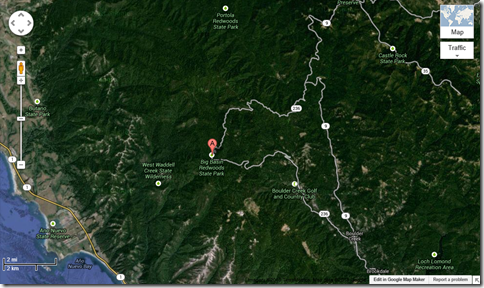
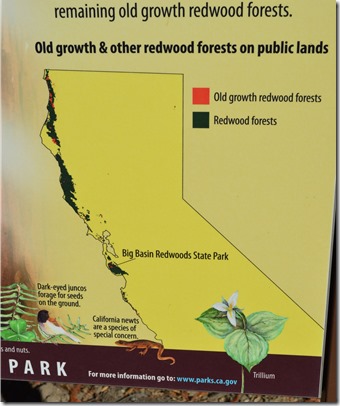
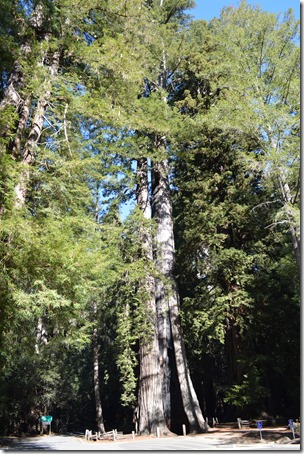
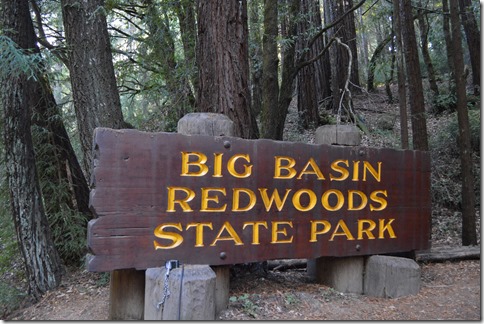
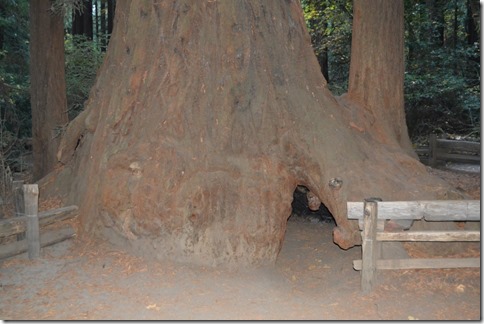
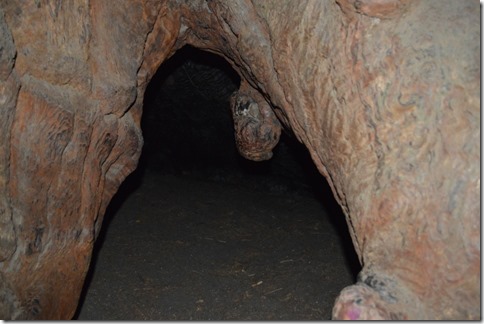
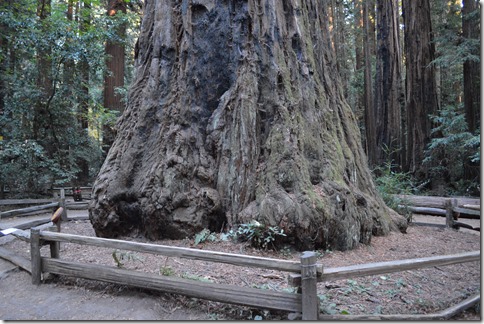
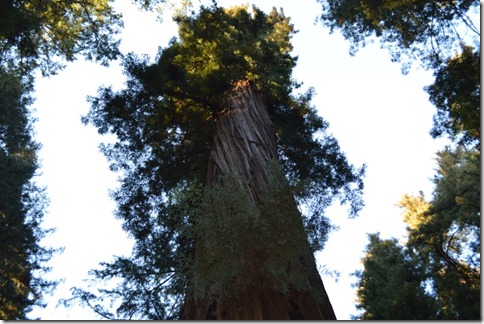
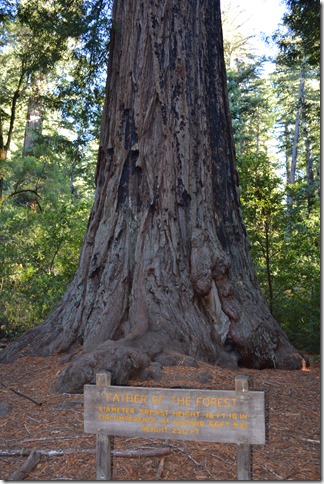
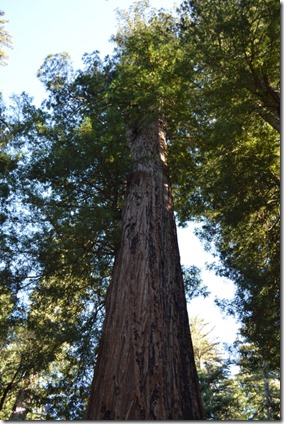
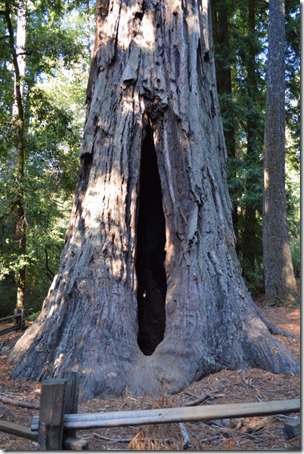
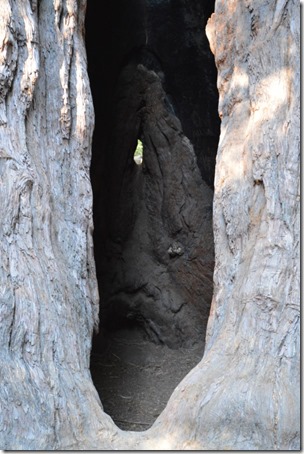
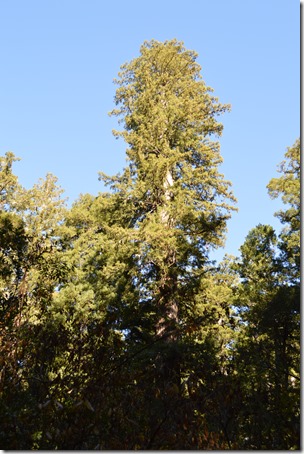
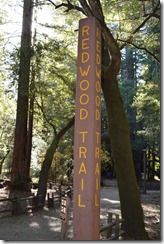

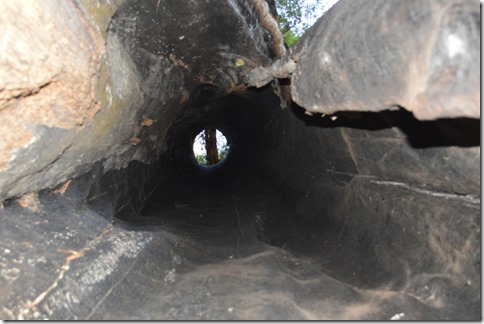
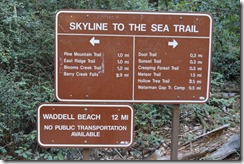


1 Comment
Comments are closed.